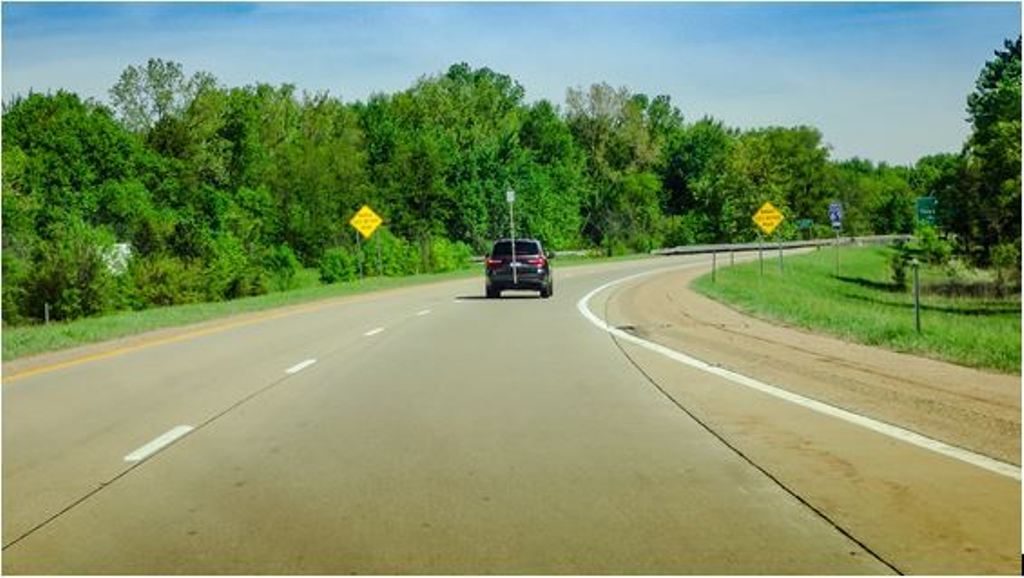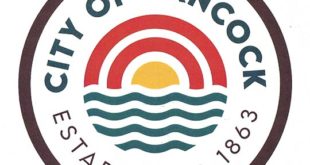
The following press release was issued by MDOT:
June 18, 2019 — The Michigan Department of Transportation (MDOT) routinely inspects concrete bridge decks around the state as required by national standards. Typically, this requires a visual inspection from the shoulder of the roadway, outside of traffic flow. But MDOT and the Michigan Tech Research Institute (MTRI) are working on a better way to get a close-up view of bridge deck conditions.
Damage to concrete bridge decks typically starts as surface cracks before getting worse. Cracks can expose the steel reinforcement to road salt and water, causing corrosion, spalling and subsurface fractures. Traditional bridge deck inspections conducted from the shoulder might miss subtle hairline cracks.
A new system allows inspectors to scan fine details of bridge decks at near-highway speeds without the need for lane closures or exposing workers to potential traffic hazards. The 3-D optical bridge evaluation system (3DOBS) uses a vehicle-mounted camera and image analysis software to supplement traditional inspections.
In earlier phases of this project, MDOT tested a digital still camera, which had plenty of resolution to pick up details but lacked the necessary frame rate. Researchers then tried an updated version of 3DOBS that uses a professional cinema-grade digital camera called the RED 8K S35. Attached to a truck by a custom MDOT-built mount on a standard trailer hitch, this new camera could capture high-quality video images and spatial orientation data at near-highway speeds under real-world conditions.
“The big difference is that this camera offers full-resolution images at 60 frames per second,” said MTRI’s Richard Dobson, the principal investigator on the project. That capability makes the difference between being able to scan a bridge deck at 5 mph versus 45 mph, he said. “At 35.5 megapixels, with the camera 9 feet above the ground, we can put a lot of pixels on a spot.”
The researchers took multiple vehicle trips across 10 different MDOT bridges, including freeway and non-freeway bridges and in high-traffic metro areas. Then they compared the 3DOBS results to traditional inspection reports and determined how to best use the technology to improve asset management decisions.
“The two biggest advantages to this system are that there’s very little disruption to traffic… and you don’t expose inspectors to traffic,” Dobson said. “We can collect all this data without having to have inspectors on the road and without closing lanes.”
There are other advantages to this method as well, including speed and accuracy. The new camera was able to resolve cracks down to 1/64th of an inch. The typical data collection time for an average sized bridge deck was 30 minutes or less, Dobson said.
After the data is collected, the software can generate two types of output: a 2-D mosaic stitched together from many individual images or a 3-D model of the bridge deck. The system allows inspectors to pinpoint deck deficiencies – information that can supplement other inspections. The imagery can also be used to monitor deterioration over time.
Researchers have trained MDOT staff on using the camera and software. Most of the data processing steps have been automated so inspectors can focus on interpreting the 2-D or 3-D images. The software can also generate condition data as required for inspection reports. The bottom line: a better, faster picture of bridge deck conditions.
With 75 percent of MDOT’s highway bridges 40 or more years old, using sound asset management tools is critical for preserving the system. Using the 3DOBS system to supplement traditional inspections will be especially valuable for structures with large deck areas. Routinely collecting imagery of these bridge decks with 3DOBS will help MDOT gain a better understanding of deterioration rates, allowing repairs and preservation treatments to be performed at the optimal time. “This project provided innovative technology to supplement routine bridge deck inspections while creating a safer working environment for bridge inspectors,” said MDOT project manager Bandon Boatman. “We’re very excited about potential future applications.”
Boatman said MDOT will continue to evaluate the 3DOBS technology this summer to see how it best fits it into inspection workflows. Regional offices can request to use the camera and will be trained on the system as needed.
One limitation is that neither the 3DOBS camera nor traditional visual inspections can detect subsurface concrete fractures (delamination). This requires acoustic techniques, such as hammer sounding or chain dragging, or infrared technology.
In the future, the 3DOBS system could also be used together with other emerging sensor platforms to perform more precise and efficient bridge inspections. Aerial drones are more restricted in their uses – they can’t be flown over live traffic, for instance – but they can carry thermal or other sensors in places where vehicles can’t be driven. MTRI’s Dobson noted that the university is also researching underwater drones that can detect scour damage on sediments near bridge piers.
Federal law requires all bridges to be inspected at least every two years to monitor and report condition ratings. Bridges on the state (I, M and US routes) and local road systems are rated good, fair or poor. Condition ratings are an important tool for transportation asset management, as they are used to identify preventive maintenance needs and to determine funding priorities for improvement and replacement projects.
For more details on the state’s bridges and bridge conditions, go to www.Michigan.gov/Bridges. For more on how MTRI researchers are pioneering new remote sensing and inspection technologies, go to https://www.mtu.edu/news/stories/2019/june/clearing-the-decks-mtri-zooms-in-on-bridge-damage.html or watch their video.
 Keweenaw Report Your Source for Local News and Sports
Keweenaw Report Your Source for Local News and Sports




